Editor’s Note: This advertisement was written by AdvanceCT and approved by Area Development.
Corporate decision makers crave predictability. Achieving this elusive goal has become increasingly challenging due to the unpredictable nature of our economy. Tariffs and trade wars are causing paralysis among decision makers worldwide as they seek guidance on navigating these turbulent times. A lack of predictability means more risk – that is difficult to quantify.
The concept of risk is evolving. Traditionally, location decisions have been driven by cost and resources, often reduced to mere numbers in a spreadsheet. Global tariff uncertainty is just one of many risk factors that have typically been omitted from the calculus when companies are making location decisions. This raises the question: what other factors are being missed?
Traditional risk scenarios include weather events and infrastructure instability. However, new challenges impacting business performance are increasingly cultural, political, and social. For example, a lack of childcare in a particular area can significantly impact productivity if working parents must stay home to care for their children. Productivity is crucial for business success, so any condition that impedes it must be carefully examined.
Factors affecting productivity can range from inadequate public transportation to a lack of nearby restaurants where employees can quickly get lunch. These seemingly minor details will impact the time employees spend working. Since the pandemic, other community factors such as access to healthcare and the overall health of the community have also become more important when considering locations.
Recently, a defense manufacturer chose to locate a facility near a city known for attracting former hippies and activists. Community members organized protests, disrupted operations, and blocked hiring events. These cultural risks should have been considered during the decision-making process.
Given today’s political turbulence, it is essential to evaluate policy, politics, and civic leaders for potential risk factors, even at the local or state level. Depending on the business, local political landscapes can present costly barriers, especially if the jurisdiction faces fiscal challenges or legacy financial obligations.
Another critical consideration is the centralization of facilities. For instance, a large industrial fire in a 1,000,000 square foot facility outside of Philadelphia, which produced fasteners for the global aerospace industry, destroyed the entire facility. This created shortages in the global aerospace supply chain and disrupted operations to the extent that it could take years to recover. Decentralizing operations could have created redundancy and allowed for 24-hour shifts at different locations, mitigating the impact.
Discussing “what if” scenarios and unlikely events is crucial because they can quickly become reality. Evaluating culture, social infrastructure, political landscape, and the work culture of the population is essential for understanding their potential impact on productivity and operations. Examining a jurisdiction’s track record for philanthropy, giving, and volunteering can provide insights into the social fabric and culture of a community. Choosing a location that aligns with your company’s values and culture is best practice. Therefore, it is time to move beyond numerical values and cost savings, which can quickly become obsolete, and view risk through a more comprehensive lens that reflects the long-term, valuable investments that are being considered.






